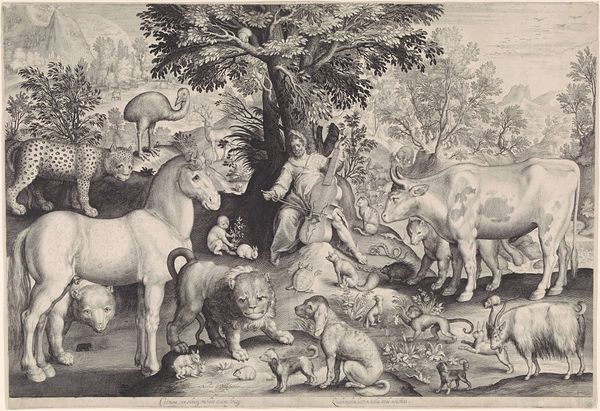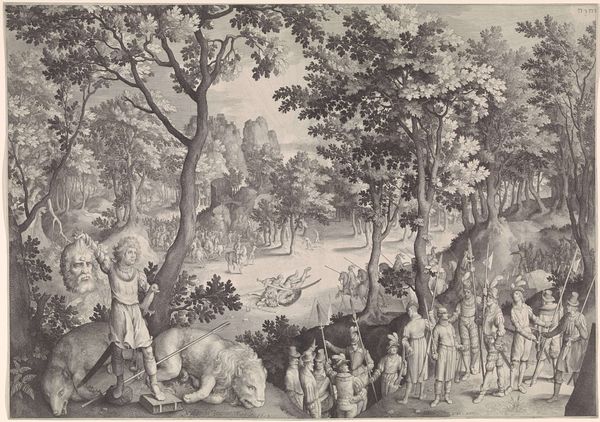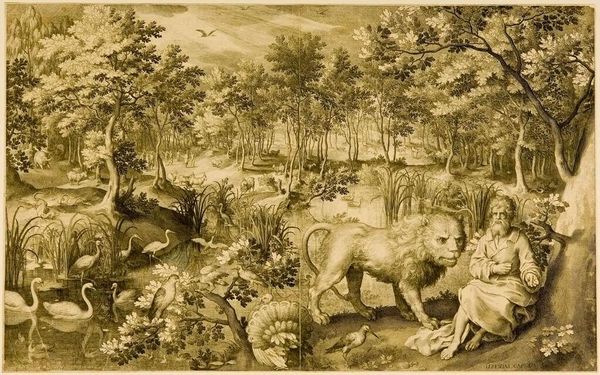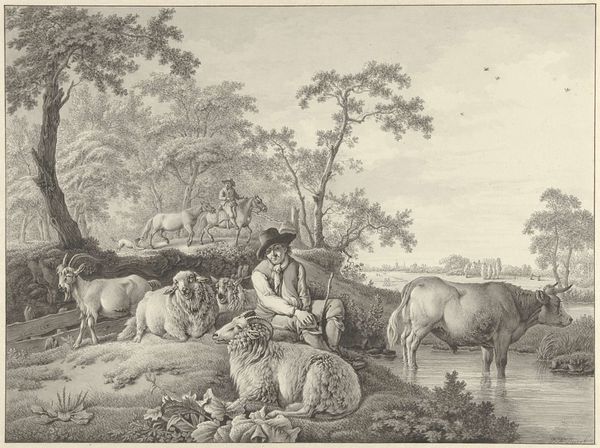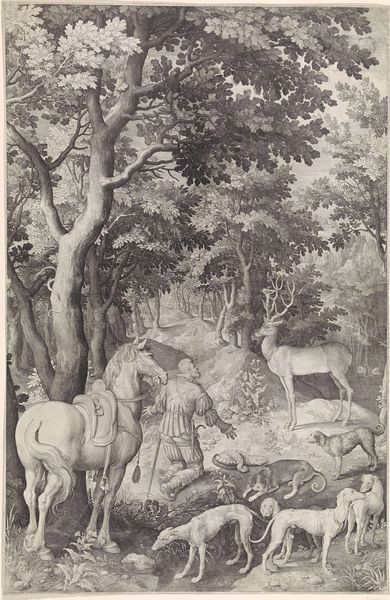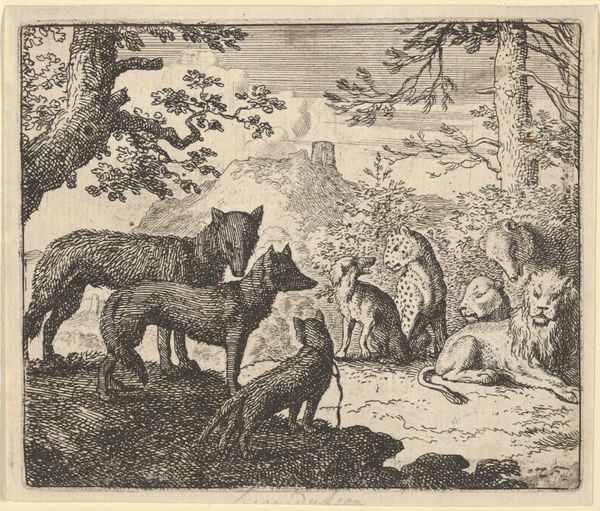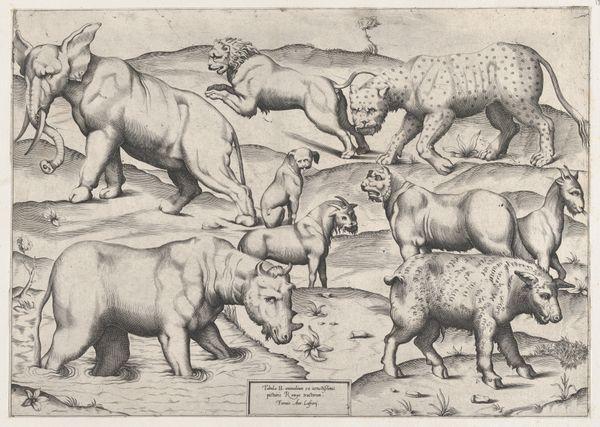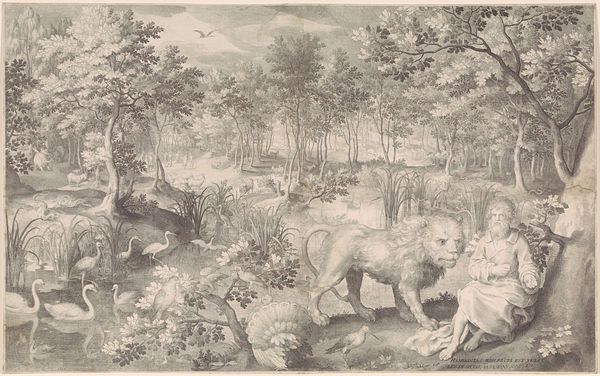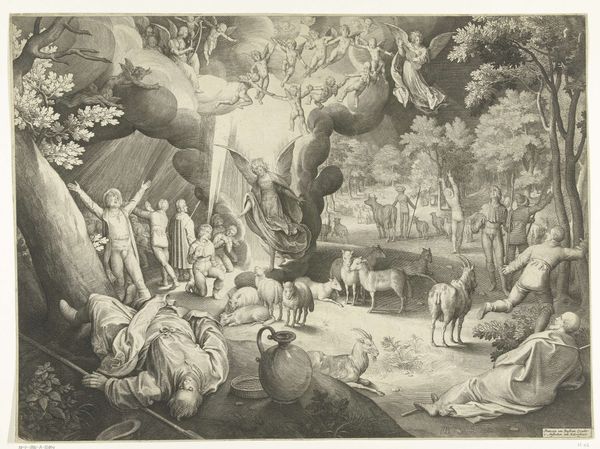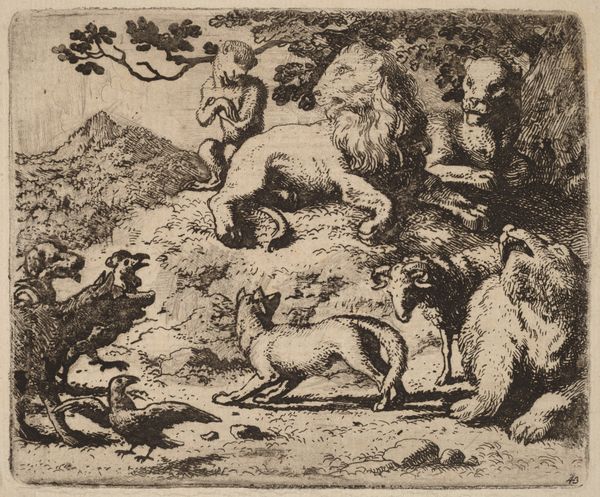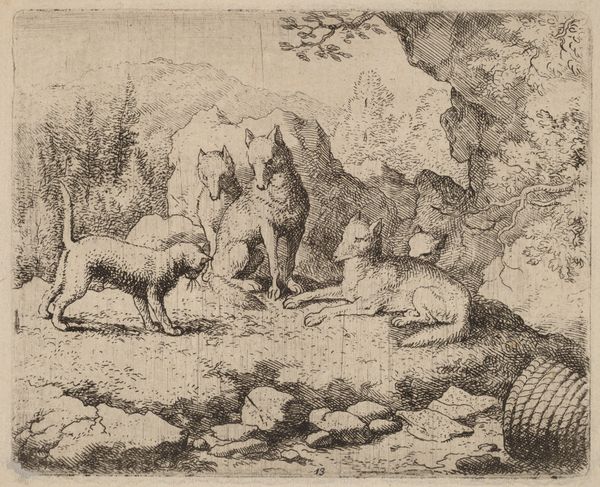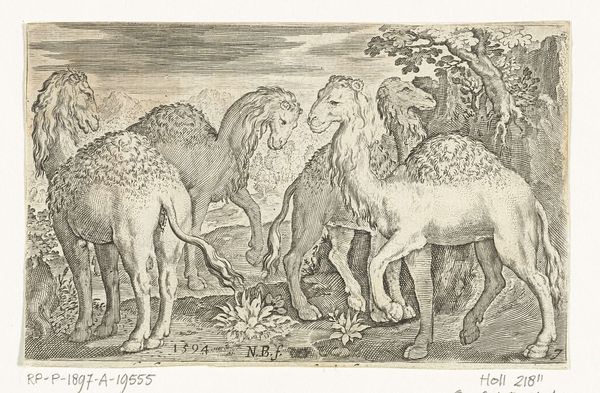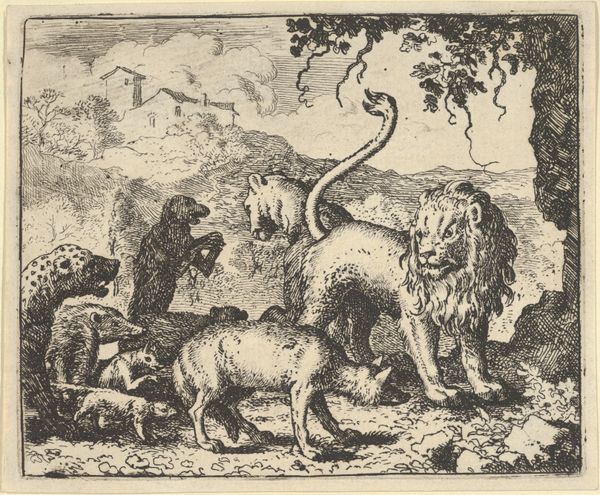
print, engraving
#
narrative-art
#
dutch-golden-age
# print
#
landscape
#
figuration
#
pencil drawing
#
history-painting
#
engraving
Dimensions: width 684 mm, height 468 mm
Copyright: Rijks Museum: Open Domain
Editor: This engraving, "Eva verleidt Adam tot het eten van de verboden vrucht," from 1642, by Nicolaes de Bruyn, shows Adam and Eve in the Garden of Eden. It's incredible how much detail is in this print! It looks so peaceful with all the animals, even though the scene depicts a transgression. What catches your eye when you look at this, or how do you interpret the artist’s choices here? Curator: Immediately, the juxtaposition of idyllic landscape with the pivotal moment of temptation intrigues me. Notice how the animals—symbols of innocence and harmony—are placed so close to Adam and Eve and the serpent. This closeness amplifies the before-and-after effect: before the fall, harmony; after, expulsion and disharmony. Do you see any specific animals that strike you as particularly symbolic within this context? Editor: The serpent, obviously! But I also notice the lions, who look more like docile house cats than threatening predators, maybe signifying dominion over nature that will be lost? Curator: Precisely! The serpent isn't merely present, it's entwined around the tree, becoming part of the natural order yet representing chaos to come. And your point about the lions—spot on! They, along with the other animals, represent a pre-lapsarian state. Think about the apple itself: beyond the biblical narrative, consider the long history of fruit as symbols of knowledge, abundance, but also temptation in art and culture. Does understanding these layers change how you see the engraving? Editor: Absolutely! It makes me think about how artists use familiar symbols to speak to deeper truths about human nature. Now I see it’s not just a biblical story but a reflection on the loss of innocence, knowledge, and the consequences of our choices. Curator: Indeed. And that's the power of visual symbols: they distill complex ideas into easily recognizable forms that resonate across generations. The echoes of this scene continue to ripple through our collective cultural memory.
Comments
No comments
Be the first to comment and join the conversation on the ultimate creative platform.
